[ad_1]
Where is the dance field headed next? The dancers, choreographers, directors, and companies on our annual “25 to Watch” list offer heartening, imaginative, exciting possible answers to that question. Whether or not you’re already familiar with these up-and-comers, our editors and contributors from across the dance world predict that we’ll be hearing a lot more from these artists on the verge of a breakout in 2025 and beyond.
Julia Antinozzi | Isaiah Day | Brett Fukuda | Melisa Guilliams | Kayla Hamilton | Jasmine Hearn | Dava Huesca | Leïla Ka | Francisco Lemus | Ruby Lister | Rachel Lockhart | Joseph Markey | Jainil Mehta | Genna Moroni | Mayfield Myers | Primera Generación Dance Collective | Loughlan Prior | Qwenga | Kendall Ramirez | Kyle Sangil | Symara Sarai | Enzo Saugar | Gilbert T. Small II | Yoel Vargas | Miguel Wansing Lorrio
Julia Antinozzi
Independent choreographer

Replete with romantic ballet lines that skew and morph expectations, Julia Antinozzi’s Third Variation splits the difference between ballet and postmodern. Her cast of four oscillates between executing bourrées like a massive corps de ballet and languidly circling their arms in deep lunges. Presented at New York Live Arts at the conclusion of her Fresh Tracks residency last spring, the work served as an epilogue to The Suite, which she developed at Triskelion Arts as the inaugural recipient of the Triskelion Fellowship in 2023–24. Taken altogether, the works illustrate a probing of her fascination with classical ballet filtered through a contemporary—and uniquely Antinozzi—lens, daring viewers to take a closer look.
Antinozzi graduated from Smith College in 2018 with a dance degree and an astronomy minor, and has been choreographing for her own dancers since 2022. An avid dancegoer—particularly when it comes to New York City Ballet—she’ll be clocking plenty of studio time herself in the season ahead: She’s participating in Live Artery at New York Live Arts this winter as well as this spring’s NYCB-affiliated New York Choreographic Institute.
—Charmaine Warren
Return to top
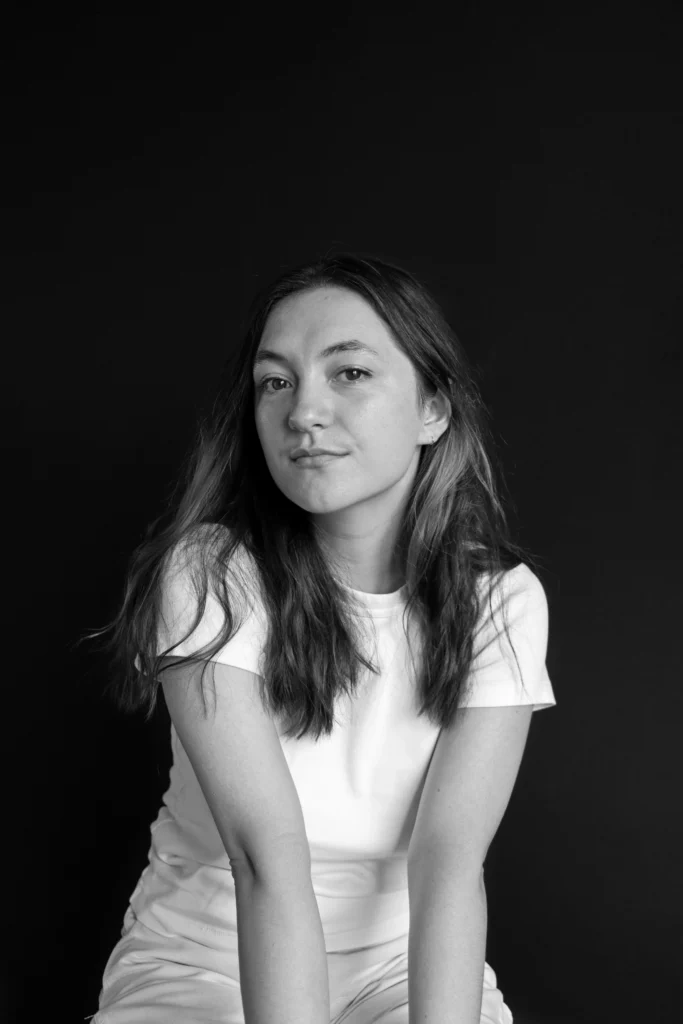
Isaiah Day
Dancer, Alvin Ailey American Dance Theater
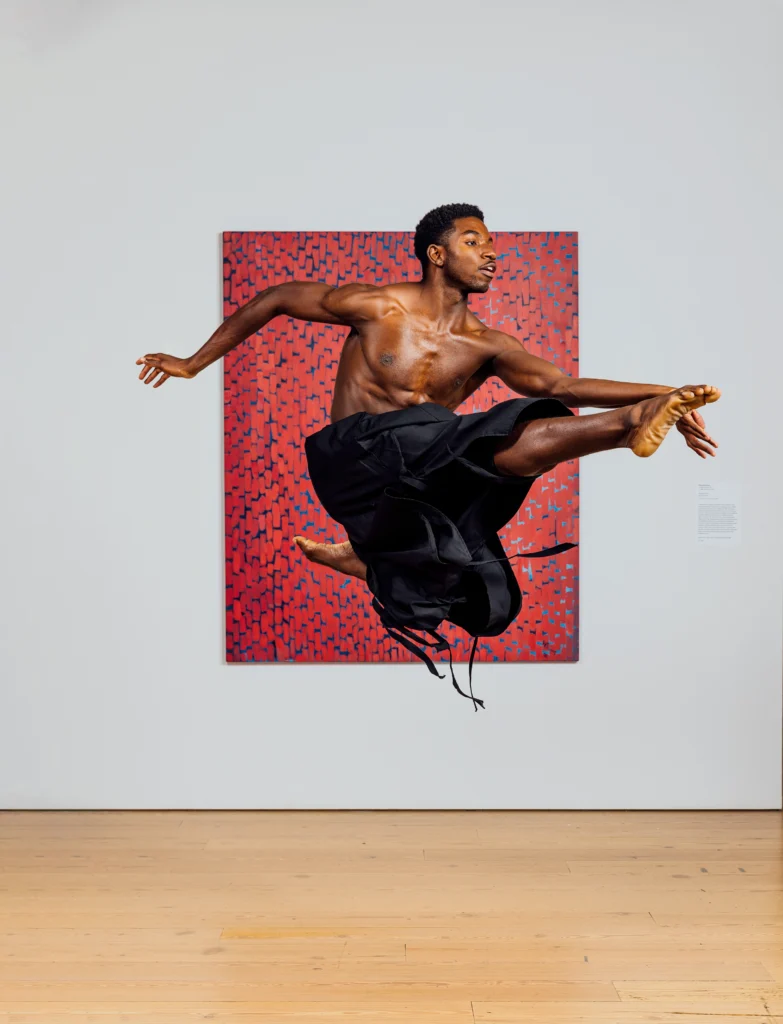
Graduating with a contract offer from a major dance company is a dream for many college students. Isaiah Day already had a full season with Alvin Ailey American Dance Theater under his belt when he graduated from The Juilliard School in May.
It’s clear why Ailey wanted him. The 22-year-old matches high-flying power with an inherent elegance, an enchanting combination that came to the fore during his first New York City Center home season with Ailey in December 2023. Cast in the “Sinner Man” section of Alvin Ailey’s Revelations, Day hit a perfect balance between silvery articulation and red-hot combustion, delivering a precisely modulated performance alongside veteran dancers Christopher R. Wilson and Kanji Segawa.
Originally from Chicago, Day studied at Hubbard Street’s Youth Dance Program and The Chicago Academy for the Arts, and was named a YoungArts winner in modern/contemporary dance in 2019. Midway through his second season with Ailey, he’s just beginning. “Dance,” he says, “is my best friend.”
—Kyra Laubacher
Return to top
Brett Fukuda
Dancer and choreographer, CCN-Ballet de l’Opéra national du Rhin
What if a muse were more than a vessel of inspiration for men—and instead regained the power and autonomy she had in Greek mythology? Last winter, rising choreographer Brett Fukuda flipped Balanchine’s 1928 Apollo on its head in Muse Paradox, her first main-stage work for the Ballet de l’Opéra national du Rhin, where she is a company member. In this fluently musical reinvention, steeped in the classical vocabulary, she put the spotlight firmly on the muses’ agency.
Muse Paradox came at the request of Ballet du Rhin director Bruno Bouché, who had noticed Fukuda’s creativity and outspokenness in the studio. It ended up being an opportunity for the 32-year-old dancer to reckon with her own training at the School of American Ballet and experiences with Boston Ballet, where she was a corps member from 2014–18 before joining Ballet du Rhin.
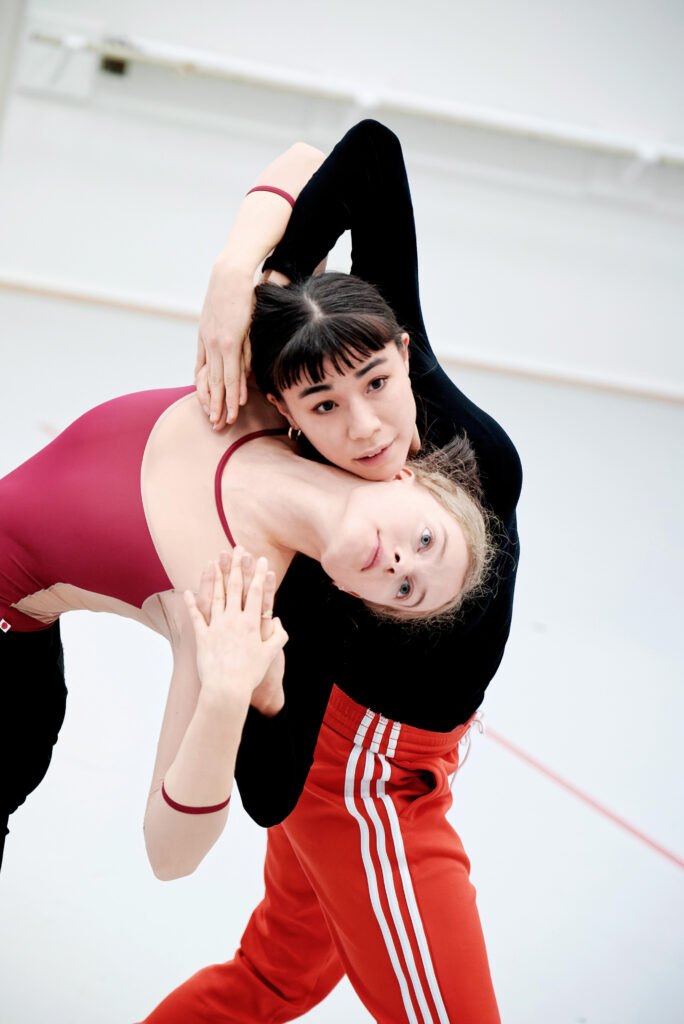
To an abbreviated version of Stravinsky’s score, Fukuda delineated thoughtful characters for the two women in the cast, even offering dancer Julia Weiss the chance to lead her male partner in an arresting reversed pas de deux. Rave reviews ensued in France. With two more creations already lined up for 2025, Fukuda is just beginning her time at the front of the studio.
—Laura Cappelle
Return to top
Melisa Guilliams
Corps member, Pacific Northwest Ballet
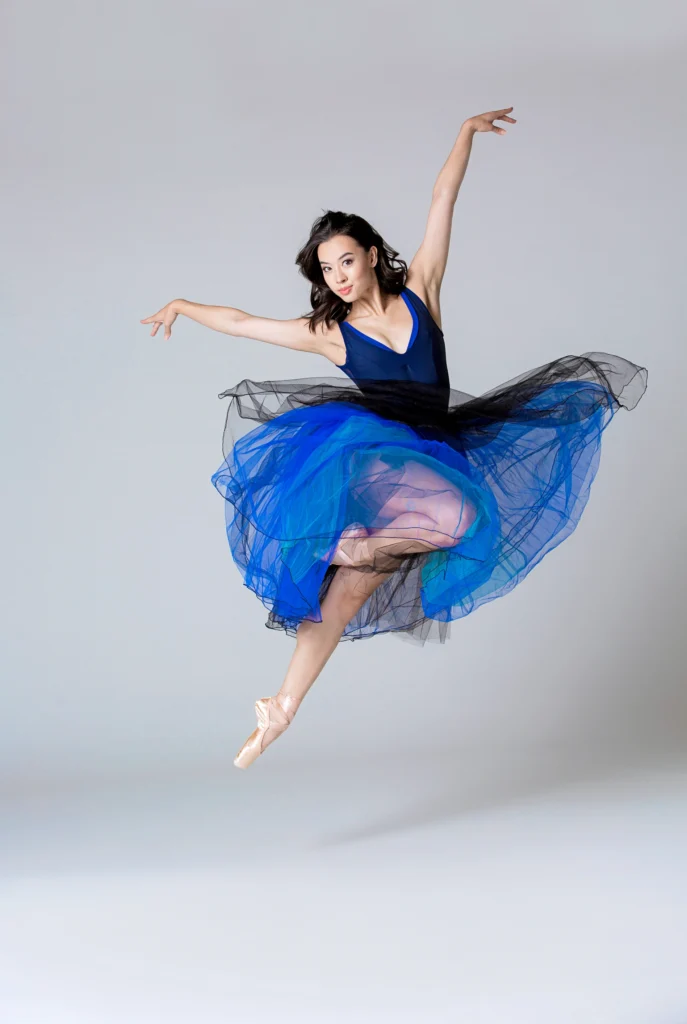
“Her potential is limitless, which is true of very few dancers,” Pacific Northwest Ballet artistic director Peter Boal says of Melisa Guilliams. An early vote of confidence in that potential: tapping her to perform David Parsons’ Caught, in which the dancer jumps nearly continuously under strobe lights for the length of the eight-minute solo, when she was just an apprentice. Now a corps member, Guilliams checks every technical box: soaring jumps, dynamic turnout, precise beats, flexible feet, pristine pirouettes, expressive arms. But the 22-year-old is a believable performer, too, whether asked to deliver soulful lyricism in Crystal Pite’s The Seasons’ Canon or the angst of Alejandro Cerrudo’s One Thousand Pieces.
The versatile Guilliams grew up in a Japanese American household, spending parts of the year with family in Japan and even going to school there. “With all those cultural shifts,” she says, “I couldn’t afford to divide myself—I’m a product of both cultures and can easily shift from one to the other, like in the diverse repertoire we perform.” She’s been cast in more Balanchine ballets as well as contemporary works recently, and with her range, musicality, and technique, says Boal, “there’s not a challenge she can’t meet.”
—Gigi Berardi
Return to top
Kayla Hamilton
Founder and artistic director, Circle O
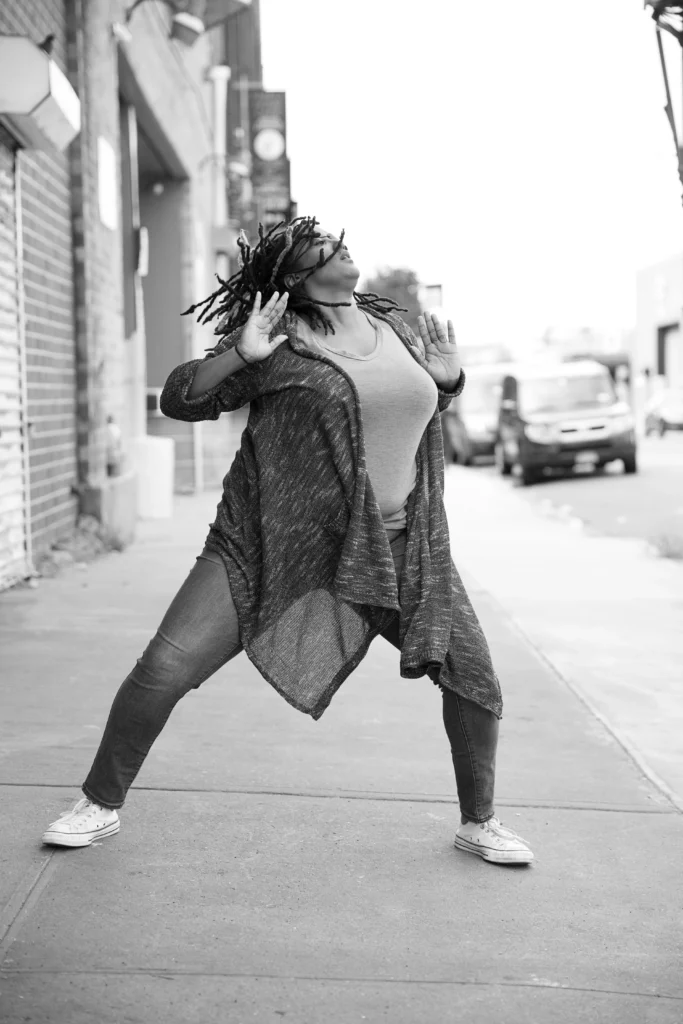
In Kayla Hamilton’s How to Bend Down/How to Pick It Up, movement and storytelling—and the means to access them—share the spotlight. Performers and audiences alike are engaged in a permeable space that accommodates every body’s needs. Premiered last year at The Shed in New York City, this multidimensional, breakout ensemble work—Hamilton’s first of its size, scope, and scale—exemplifies what she calls “disability as a method.”
The Texas-born, Bronx-based artist centers an explicitly intersectional approach in disability artistry. Through her recently launched cultural organization Circle O, she is reimagining “a dance world where Black Disabled and other multiply marginalized creatives are central.”
The granddaughter of a school principal and niece of a Broadway dancer, Hamilton recently concluded 12 years as a public school educator, which she pursued alongside her “Bessie” Award–winning performance work. Now, her full-time focus is on dance and realizing what she calls “lineages of Black Disabled imagination.” With recent institutional support from the Jerome Foundation, Mellon Foundation, and New England Foundation for the Arts, in 2025 you can expect to see her performing, co-leading visionary programs, and touring How to Bend Down nationally. Pay attention to what Hamilton is cultivating in each space she is creating. It just might be the key to help us all get free.
—Sydnie L. Mosley
Return to top
Jasmine Hearn
Independent dancer and choreographer

A spirit of community investment charged the premiere of Jasmine Hearn’s Memory Fleet: A Return to Matr in their hometown of Houston last April. Already swooping, sweeping, and spiraling in mesmerizing motion outside the venue, Hearn made eye contact with each member of the incoming audience, some of whom had attended open studio and workshop events leading up to the show. “It was powerful and affirming to return to Houston as a queer, nonbinary person,” says Hearn. They conducted five years of research with the women who nurtured them for the tribute to Black mothering that is Memory Fleet, all of which will culminate in a digital archive.
“Their work is incredibly personal and rooted in Southern forms of culture that uplifts the voices of those that have inspired them,” says Ashley DeHoyos Sauder, the curator of DiverseWorks, which co-commissioned Memory Fleet with Houston Met Dance. “It’s movements created out of life and living.”
A lauded performer in the works of many contemporary dancemakers and a two-time “Bessie” Award winner for Outstanding Performer, Hearn has recently been gaining support and momentum as a maker in their own right. A 2022 Creative Capital Grant was followed by a 2023 Rome Prize and Foundation for Contemporary Arts grant; this fall they received the inaugural Sweat Variant Threading Residency, organized by Okwui Okpokwasili and Peter Born. Next up: further touring of Memory Fleet—to Pittsburgh in October, and culminating at New York Live Arts in March 2026.
—Nancy Wozny
Return to top
Dava Huesca
Freelance dancer and choreographer
It’s not every day that a dancer gets stopped by strangers on the street, recognized from a viral video. But that’s what happened to Dava Huesca after the teaser for Cats: The Jellicle Ball—the hit reimagining of the Broadway classic, set in the world of ballroom—dropped last spring. In a pack of performers emphatically voguing toward the camera, Huesca, with a halo of curls, knee-high black boots, and powerful precision behind every move, was front and center, her bold stare meeting the lens. You couldn’t look away.
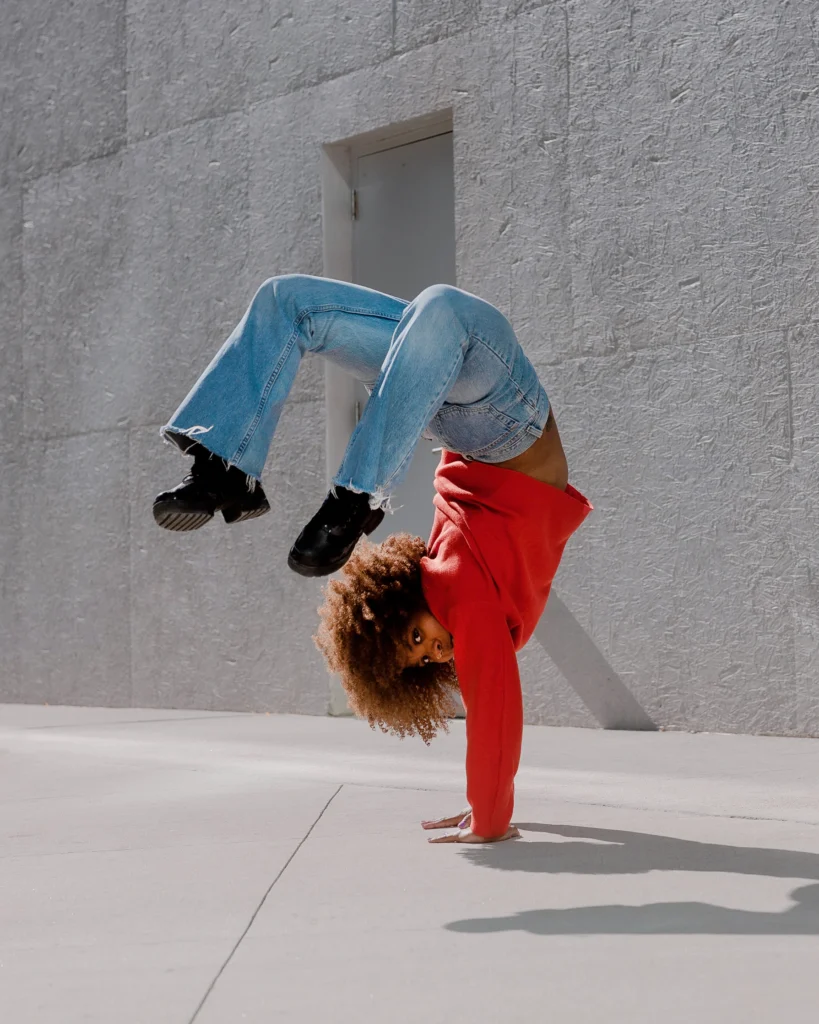
That was just a glimpse of the brilliance that Huesca brought to the runway stage of PAC NYC as Rumpleteazer. Trained as a contemporary dancer at LaGuardia High School, Purchase College, and Springboard Danse, she began taking vogue classes after college with Arturo Lyons (one of the Cats choreographers), soon becoming a founding member of the Haus of Telfar. Cats pushed her in new directions, like learning to sing and getting acquainted with angular old-way vogue. She looked glowingly at ease in it all.
Huesca is expanding her theater work this year and also has her sights set on film, while continuing to choreograph and to dance with independent artists like Laja Field, Ogemdi Ude, and Victoria Lynn Awkward. Her immersion in a large-scale show, and in ball culture generally, has boosted her confidence. As she puts it, “I feel like I have a new light.”
—Siobhan Burke
Return to top
Leïla Ka
Independent dancer and choreographer
In a scene from Leïla Ka’s Maldonne, five women wearing floral dresses hyperventilate and repeatedly crash to the floor. Strikingly reminiscent of the harsh theatricality of German dance legend Pina Bausch, the work explores multiple identities within femininity as the cast changes between 40 different dresses, from ball gowns to wedding dresses to nighties. Described by Le Monde as a demonstration of the Paris-based choreographer’s “feminist commitment,” it shows that although Ka began her dance journey training in hip hop, her experience performing in dance theater works—such as Maguy Marin’s Samuel Beckett–inspired May B—profoundly influenced her style.
Premiered in November 2023 at La Garance, Scène nationale de Cavaillon, where Ka is an associate artist, Maldonne was her first evening-length piece. The choreographer danced in it herself, as she has in all of her works since her 2018 debut solo, Pode Ser, but she is starting to hand her roles over to other performers.
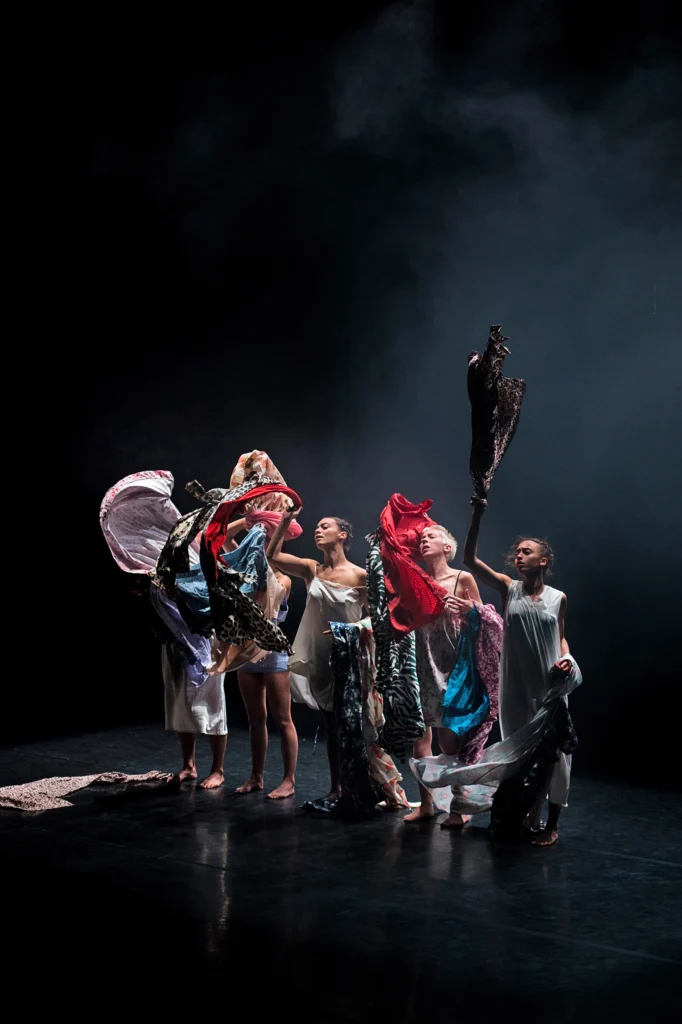
Maldonne is a nominee for the Bloom Prize, a new award for works by emerging choreographers that is part of London’s Sadler’s Wells’ inaugural Rose International Dance Prize. The work will be performed twice on the theater’s Lilian Baylis stage in February before the winner is announced, marking Ka’s UK debut. Regardless of the outcome, the nomination portends a wider audience for her breathy, expressive, dramatic works.
—Emily May
Return to top
Francisco Lemus
Dancer, Trinity Irish Dance Company
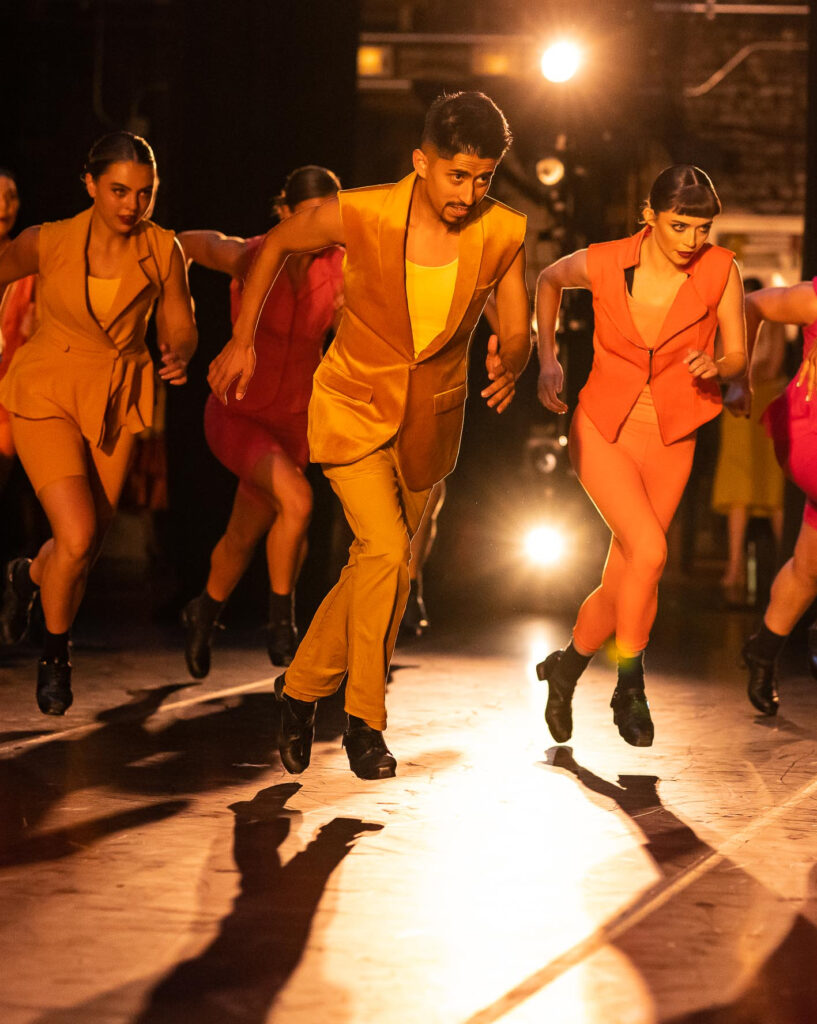
The first thing you notice about Francisco Lemus is the joy that oozes from his every pore when he’s onstage. His love of dance is irresistibly infectious, whether he’s performing in a nearly 4,000-seat theater or a tiny jazz club. Originally from Puebla, Mexico, Lemus started tap dancing at age 7 and discovered Irish dance on YouTube. In the autograph line at a touring production of Riverdance, he met a Mexican cast member who connected him to the closest Irish dance classes. Lemus traveled six hours round-trip every weekend to train in Cuernavaca, as well as venturing to Texas to study several times a year.
After scooping up accolades on the competition circuit, Lemus joined Chicago’s Trinity Irish Dance Company in 2021. He’s still tap dancing, too, regularly sharing videos on social media and taking full advantage of the storied jazz scene in the place he now calls home. That split personality was put to good use during TIDC’s 2021–22 season in Michelle Dorrance and Melinda Sullivan’s tour-de-force tap and Irish fusion American Traffic. Since then, Lemus hasn’t slowed down, time and again proving to be an electrifying presence in one of the world’s most celebrated Irish dance companies.
—Lauren Warnecke
Return to top
Ruby Lister
Corps member, New York City Ballet

In Pam Tanowitz’s Law of Mosaics, New York City Ballet corps member Ruby Lister begins a series of low fouetté arabesques. With crisp clarity and a serene, open expression, Lister adds small flicks of the hand and sprightly sissones as the phrase builds, contrasting impressive control with moments of power. “Ruby finds freedom within that really harsh structure,” says Tanowitz, who created the solo on them. “They have a quiet, old-fashioned elegance, like an old soul with a fresh take.”
Many may be familiar with Lister from the popular 2020 Disney+ series “On Pointe,” which documented the lives of several School of American Ballet students. Lister, now 21, was clearly a standout, and would win SAB’s Mae L. Wein Award for Outstanding Promise before joining NYCB as an apprentice in 2021. Born in Sumner, Washington, they initially trained at Pacific Northwest Ballet School, where they studied modern with faculty member Eva Stone. That versatility has proved an asset at NYCB, where Lister has danced featured roles in ballets by Justin Peck, Alexei Ratmansky, and Jerome Robbins, and created roles in Kyle Abraham’s Love Letter (on shuffle) and Caili Quan’s Beneath the Tides. Last season they also made their debut in Tanowitz’s Gustave le Gray No. 1. “I feel excited that I’m a part of their history,” says Tanowitz.
—Amy Brandt
Return to top
Rachel Lockhart
Freelance dancer

Justin Peck’s dance musical Illinoise gathered some of the dance world’s most gorgeous movers around its central campfire. But even in a cast of standouts, 24-year-old Rachel Lockhart glowed with a singular light. Warm, generous, and quietly self-assured, she added distinctive punctuation to the choreography’s looping phrases, finding their edges and angles. There were periods, commas, colons, little ironic quotation marks. She wrote Peck’s twisty sentences in print rather than cursive so that we could better read them.
A 2023 Juilliard graduate, Lockhart is unbound by genre. Illinoise marked her Broadway debut; she’s also danced Ebony Williams’ choreography alongside Doja Cat, and performed with the Metropolitan Opera. She brings the same clarity of movement and intention to every project. In her body, it is all both luminous and legible.
—Margaret Fuhrer
Return to top
Joseph Markey
Corps member, American Ballet Theatre

In Act III of American Ballet Theatre’s production of Swan Lake, the evil Von Rothbart takes the stage himself for a deliciously hammy dance to the ballet’s “Russian” variation. It’s a role that needs charisma, and one usually given to a senior dancer with the confidence to pull it off. But last summer, ABT took its chances on corps member Joseph Markey. With dazzling magnetism, his Von Rothbart relished the spotlight, commanding attention and seducing (not to mention partnering) each of the ball’s four princesses one by one. Buoyed by his steady, easy technique, Markey knew just how far to push his theatricality without descending into camp.
Originally from Jacksonville, Florida, Markey trained in various dance styles at Debbie’s Dance Company before joining Orlando Ballet School’s trainee program in 2017. A year later, he moved to ABT’s Studio Company, joining ABT as an apprentice in 2019 and the corps de ballet in 2021. Last season, Markey had several moments to shine, including in Jiří Kylián’s Petite Mort and as the stately Prince Gremin in John Cranko’s Onegin. This fall, choreographer Helen Pickett, who calls Markey a “remarkable artist,” cast him in the featured role of Luzhin in her new Crime and Punishment: “His kinetic and emotional intelligence, combined with his deep curiosity about this art form, has given Luzhin multiple layers of life.”
—Amy Brandt
Return to top
Jainil Mehta
Freelance dancer and choreographer
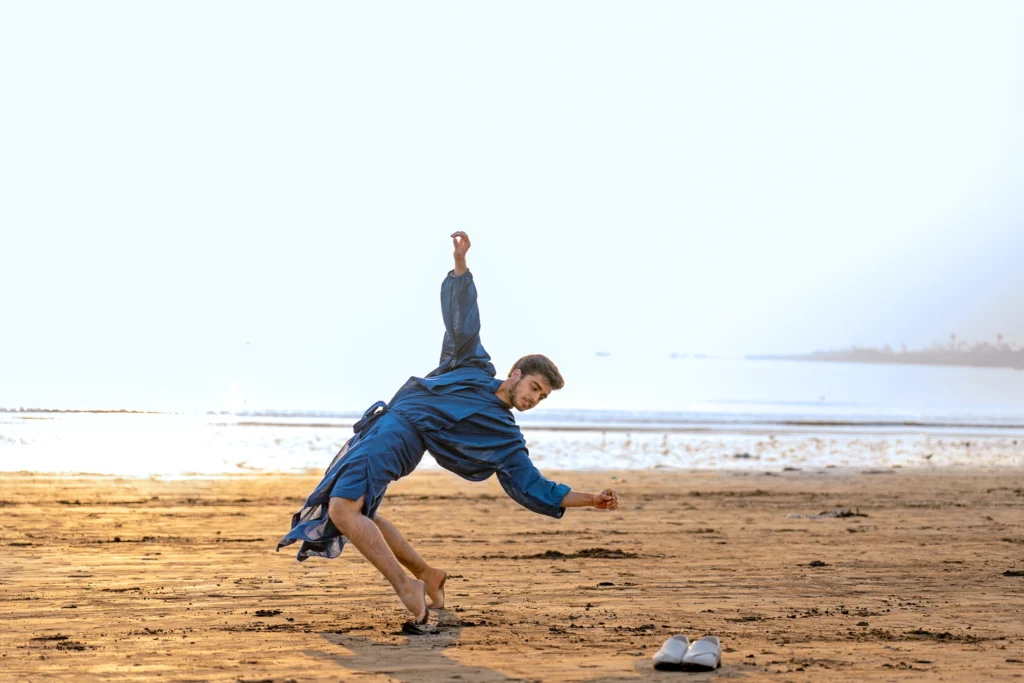
Whether he’s dancing to splashy Bollywood numbers on the streets of New York City or teaching in studios across the country, Jainil Mehta’s joy is palpable. His playful exuberance soars when he twirls, the flare of his colorful ghaghra (a traditional Indian floor-length skirt) adding an extra zing of freedom and drama to his movement. Fusing elements of Indian classical folk, modern, and contemporary techniques into a one-of-a-kind style he calls “J-Flow,” Mehta embodies a coming-together of genres that has found an enthusiastic global audience online—especially after his stellar “So You Think You Can Dance” Season 18 audition.
The 25-year-old alum of the University of Southern California’s Glorya Kaufman School of Dance is on a mission to challenge conventional gender norms, from his viral #meninskirts social media campaign to his gender-neutral clothing line, Rasa. Mehta also teaches online dance tutorials through his #iamHOME platform, and aspires to create an accredited higher education dance program in India. Offline, he’s dabbled in choreographing for music videos, has produced his own concert-dance works, and last year was named a 2024 Joffrey Ballet Winning Works Choreographer. Mehta isn’t resting on his burgeoning popularity. He’s taking full advantage of it, channeling it into real-world opportunities.
—Reanne Rodrigues
Return to top
Genna Moroni
Dancer, choreographer, and artistic director, G.U.M. Collective
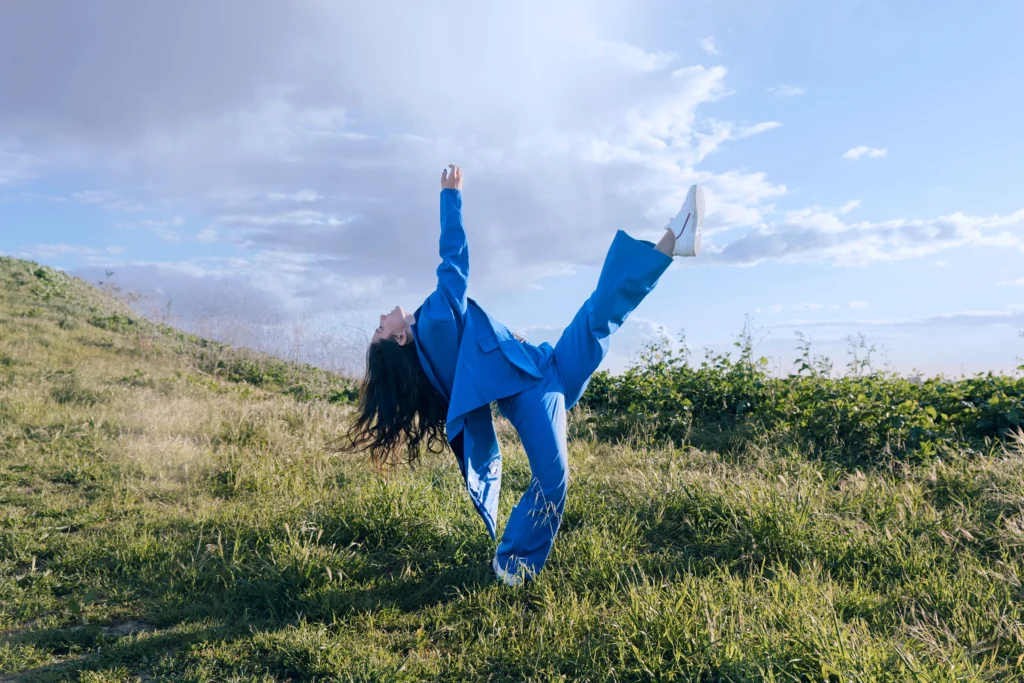
Genna Moroni is not new to the Los Angeles dance community. The L.A. native was a founding member of Ate9 Dance Company and has choreographed for artists like HAIM, Dominic Fike, and Carly Rae Jepsen. But last year, calling from the void, her first evening-length concert-dance work, showed a new solidity in her choreographic voice. Balancing agile movement with poignant storytelling, the work transports you into the chaotic world of the mind. As a monotonous voiceover describes and instigates anxieties and insecurities, eight dancers crouch and thrash in response, the choreography pulling their bodies into new textures from moment to moment.
The work premiered at Highways Performance Space in May with Moroni’s Gorgeous Ugly Movement (G.U.M.) Collective. She founded it in 2020 but had last presented work in January 2021 at REDCAT NOWFEST. Revitalizing the group and creating calling from the void in Los Angeles’ scrappy dance scene required developing her administrative and collaborative skill sets, as well as a new understanding of her own process.
Outside of her collective, Moroni is dedicated to supporting local dance artists. Last year, she became the creative producer for DanceFilmmaking.com—founded by Nadav Heyman—and helped bring the site’s inaugural award event to fruition in April. Next up: choreographing a premiere for Whim W’Him, set to debut this fall, and continuing to assist Barak Marshall, with whom she’s performed since 2010, with staging and creating new works overseas.
—Steven Vargas
Return to top
Mayfield Myers
Corps member, Philadelphia Ballet

Just a month into her first season in Philadelphia Ballet’s corps, Mayfield Myers danced the Autumn Fairy in Ben Stevenson’s Cinderella. Soon, her boss, Angel Corella, was casting her in other soloist roles: big swans in his Swan Lake, Dewdrop in Balanchine’s Nutcracker. Her Dewdrop is light and springy, with beautifully soft fingers and arms and a strong upper body, carefree and in control. “She’s got that capacity of making things really hard look very, very, easy,” Corella says of the 22-year-old, who joined Philadelphia Ballet II at 18 and skipped the apprentice rank when she moved to the main company a year later. “But I think that her strength is how chill she is about everything.” That makes her easy to work with in the studio, he says, and translates into a sense of freedom onstage.
Myers was coached by Heather Watts in Dewdrop in 2023, and for the past two years was invited to perform at Vail Dance Festival by Watts and artistic director Damian Woetzel. There, Myers tackled more Balanchine soloist roles, showcasing her musicality and attack as Polyhymnia in Apollo and the jumping girl in Who Cares? Now in her third season with Philadelphia Ballet, Myers says she is focused on developing her artistry within the company’s Balanchine and classical rep.
—Ellen Dunkel
Return to top
Primera Generación Dance Collective
Contemporary dance troupe
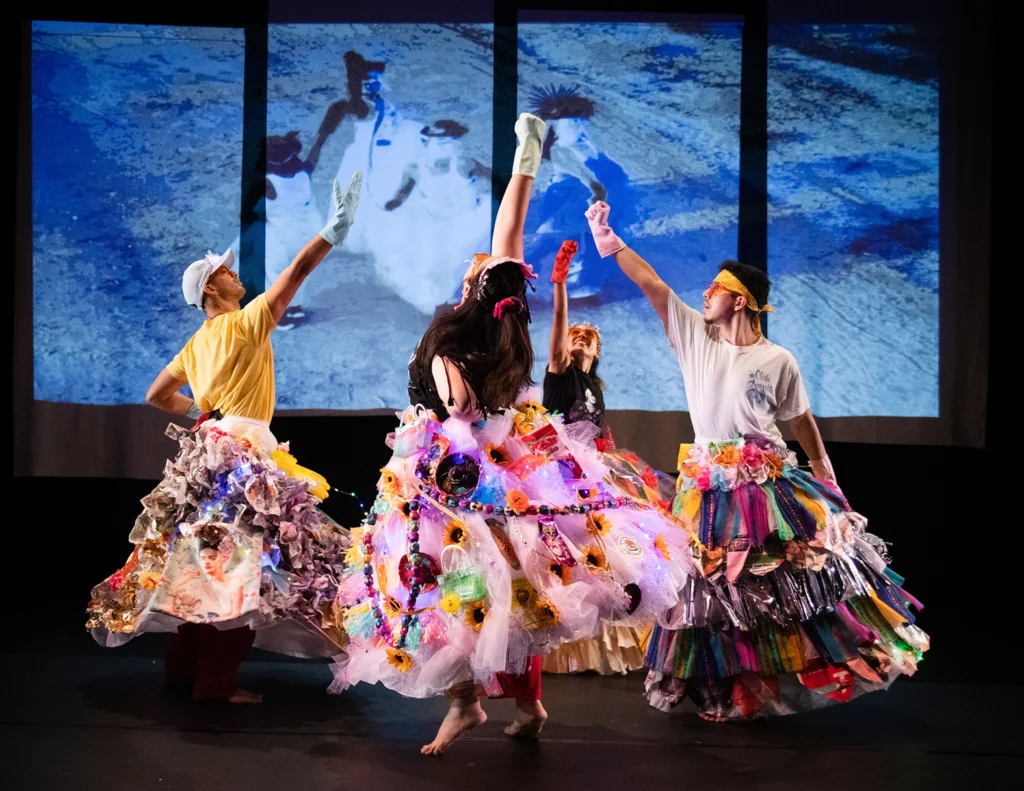
The artists behind Primera Generación Dance Collective aren’t afraid to get a little messy. Self-professed “desmadre-makers” (in English, the phrase translates roughly to “mess-makers”), first-generation Mexican American dancers Alfonso Cervera, Rosa Rodriguez-Frazier, Irvin Manuel Gonzalez, and Patrica “Patty” Huerta find beauty in chaos. The group’s NOStalgia POP, a hybridization of text, satire, song, and movement that premiered at REDCAT in Los Angeles last June, references everything from Western media depictions of Latin pop culture to the performers’ own memories of growing up first-generation.
The group’s founders met in 2015 as graduate students at the University of California, Riverside, and initially bonded over a mutual frustration with a lack of representation in Los Angeles’ contemporary dance scene. Their first evening-length work, Nepantla, was put on pause by the pandemic before finally premiering in 2022. Today, the Los Angeles– and Riverside-based collective travels around the U.S. performing vibrant, multilingual productions rooted in experimental choreography and Latin American social dance. Now all professors of dance themselves, the founders are particularly interested in exploring Mexican American identity through movement. “Mexican Americans are not a monolith,” Gonzalez says. “Fonzie and I are queer; Rosa and Patty are women. Our experiences are all different, so we bring disparate images and stories to the space and unpack them differently, too.” Fellow mess-makers can catch NOStalgia POP in January at San Francisco’s CounterPulse.
—Phoebe Roberts
Return to top
Loughlan Prior
Ballet choreographer
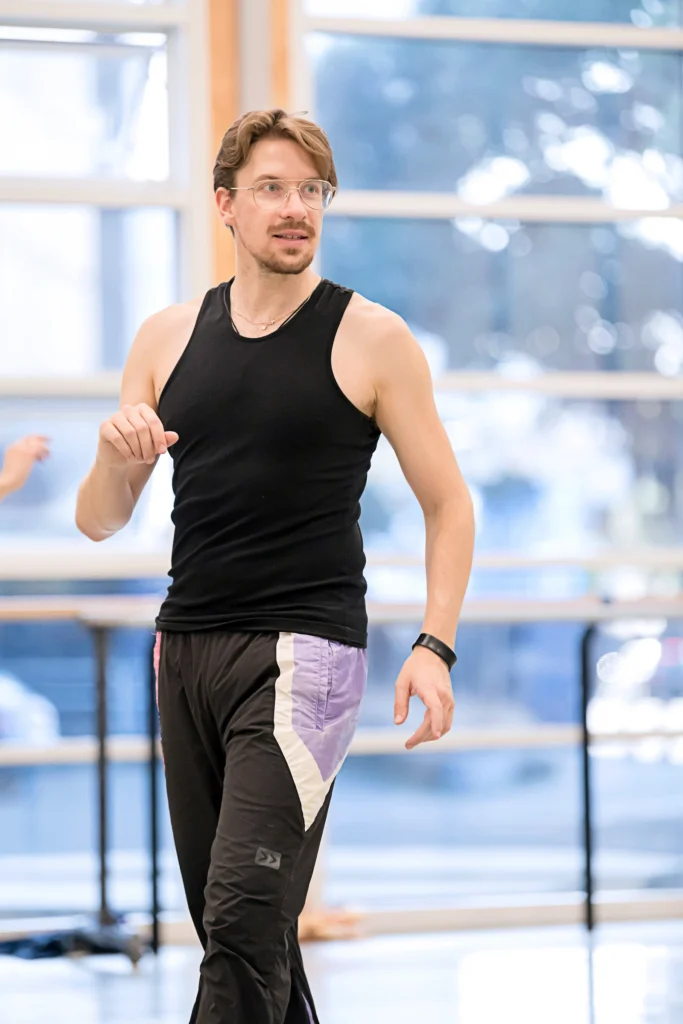
Loughlan Prior serves up feasts for the senses. The Kiwi dancemaker has aptly described his work as “maximalist,” with playful choreography and florid concept design. Often thoroughly camp—and consistently enrapturing—his ballets are created for the modern world, with characters and thematic elements that topple heteronormative tropes and spotlight contemporary issues.
That all-in approach has begun catching eyes in the U.S. His Macaroni, commissioned for BalletX’s 2024 summer season, strikes a tricky balance of tender sincerity and utter hilarity as it reclaims historic queer caricatures. His deliciously fun Hansel & Gretel, created for Royal New Zealand Ballet, where he’s been resident choreographer since 2018, landed at Oregon Ballet Theatre this fall.
Prior is a former RNZB soloist, creative director of the film collective Prior Visual, and co-founder and artistic director of Lo|Co Arts with composer and frequent collaborator Claire Cowan. Expect to see his full-picture brain power shining through in more projects in New Zealand and beyond.
—Kyra Laubacher
Return to top
Qwenga
Freelance commercial dancer and independent choreographer
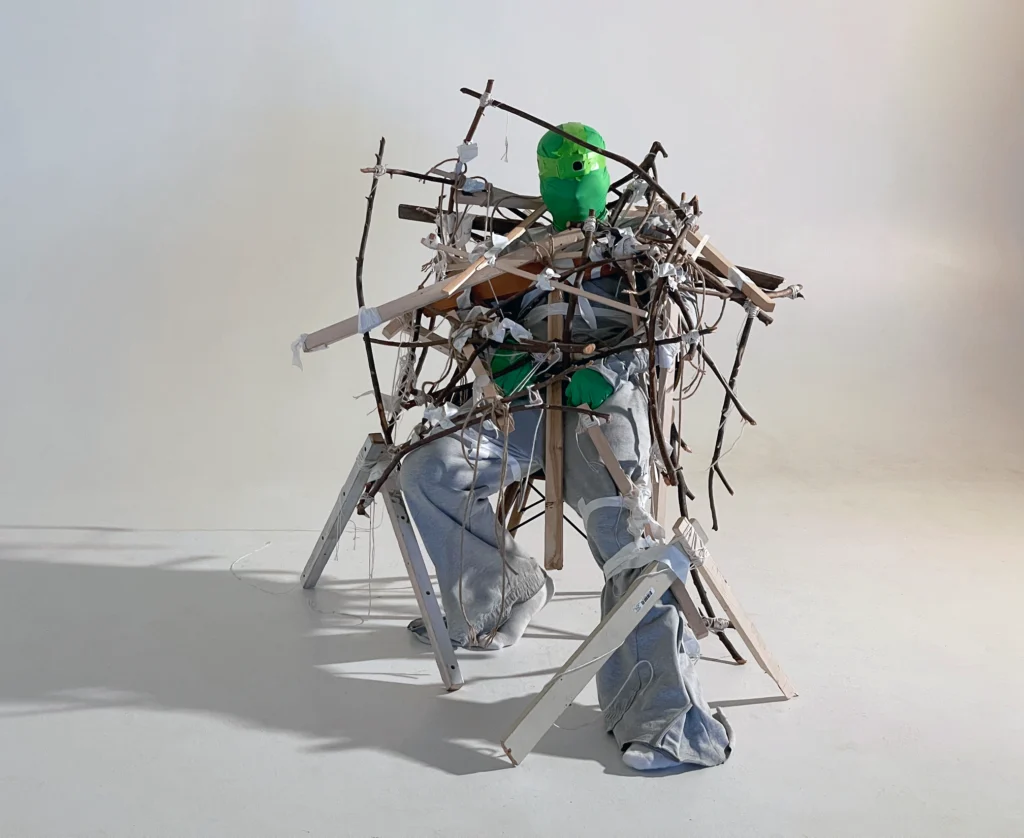
When Qwenga performs, his stillness can be as earth-shattering as his most explosive movements. In his Monolith, he shook and crumpled to the ground as the lights strobed. When they settled and he lifted his eyes to the audience, the strength of his presence arrested attention without him needing to move an inch.
Monolith explores a dystopian world, telling the story of a telepathic man who is captured after he tries to unveil the truth behind a monolith created by a powerful elite to control the rest of society. The Los Angeles–based performance artist shared the first iteration of the ongoing project, a collaboration with Elliot Sellers, at the Institute of Contemporary Art, Los Angeles, during its “Infinite Rehearsal” exhibition. Since then, Qwenga and Sellers have created an experimental film with a fellowship at SCI-Arc and plan to use it as proof of concept for a feature film. When he isn’t building upon his experimental science fiction, Qwenga works in the commercial sphere with artists and brands like Travis Scott, Bad Bunny, Calvin Klein, and On running shoes.
Qwenga’s artistic journey began at family cookouts, dancing while the adults played spades. His dance practice, which he describes as “chaos,” is heavily influenced by krumping. “Krumping inspired me that a bunch of people can come together from different parts of the city, meet in a parking lot behind a Walmart, and huddle up in a circle with a speaker to create a world within a world,” Qwenga says. What worlds will he build next?
—Steven Vargas
Return to top
Kendall Ramirez
Freelance contemporary dance artist

Kendall Ramirez’s every gesture explodes with feeling, their facial expressions delicate and subtle, yet eminently readable. In Danielle Swatzie’s a prelude to eyes are portals to the soul, Ramirez tosses their body to the music’s driving polyrhythm, whirling at high velocity until they stop, catching one leg in midair like a flash of insight. Their clownish character in Annalee Traylor’s this thing is real tries to conceal their joint hypermobility, which inevitably bursts into its extreme range like a child rebelling against their parents’ control.
Since 2022, when Ramirez earned a BFA in contemporary dance from University of North Carolina School of the Arts, their boundary-pushing curiosity has led them to Swatzie, Traylor, and George Staib, Atlanta-based choreographers whose processes allow them to safely explore physical, emotional, and performative extremes. Ramirez brings those experiences to their own creative work: They’re currently developing a solo dealing with grief and absurdity, inspired by their family’s struggle to cope with Ramirez’s father’s Alzheimer’s.
At the root of Ramirez’s onstage spontaneity is a deep interest in the “blurry gray area” between what’s choreographed and what’s improvised. “In that split-second moment of choice,” they say, “anything is possible. It’s about fully investing in the choice and giving it every ounce of sureness that I can.”
—Cynthia Bond Perry
Return to top
Kyle Sangil
Dancer, Whim W’Him
Whim W’Him’s Kyle Sangil disappears into choreography with ease. He seems to float through Ihsan Rustem’s Rechercher. Réunir, his dancing lithe and hauntingly lyrical. He can be playful, too, becoming a limp rag doll that jolts to life in artistic director Olivier Wevers’ The Scorch of our Tides, or explosive, as in Joseph Hernandez’s turbulent contest/contest. Versatile and confident, the 25-year-old Philippine-born dancer trained in ballet, hip hop, breaking, and musical theater before earning a BFA in dance with a concentration in ballet from Point Park University. “I was the only Filipino in most dance spaces growing up in Texas,” Sangil says. “The way I’d move was different, the way my body was shaped, and now I use this to my advantage.”
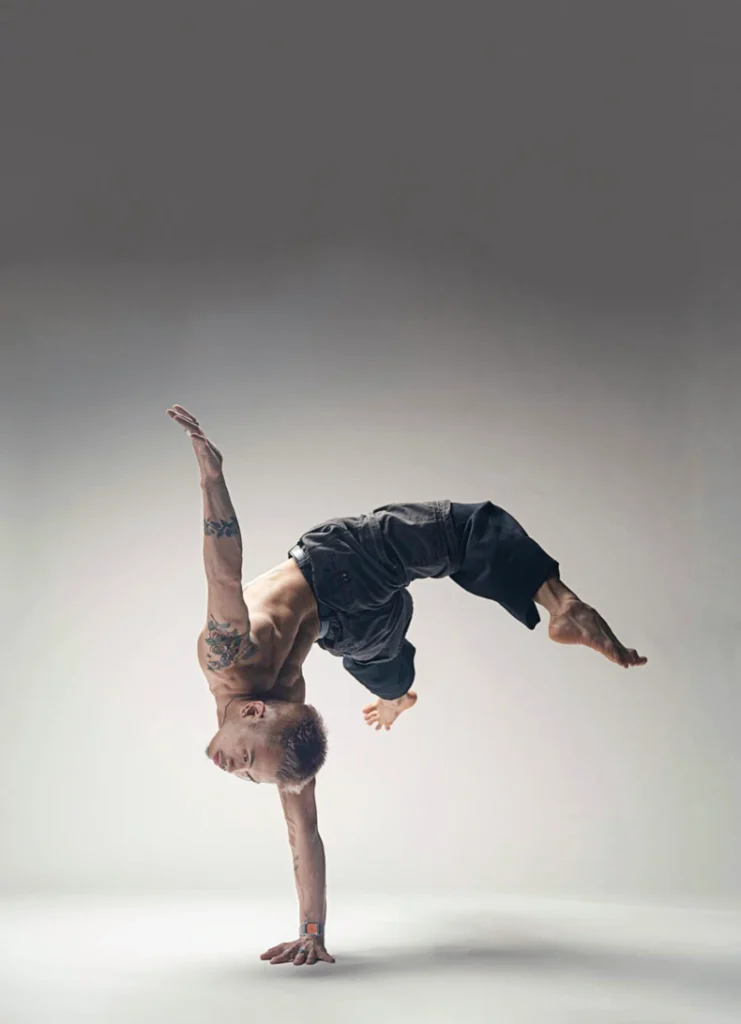
When he’s not in rehearsal with Whim W’Him, where he’s in his third season, Sangil’s improvising in the studio by himself or teaching his popular Hippin’ & Flippin’ children’s class, a mix of tumbling and hip hop, at Whim W’Him Contemporary Dance Center. For Wevers, “He’s genuine, authentic, passionate. We’re missing the artists that can pull us in. Kyle does just that.”
—Gigi Berardi
Return to top
Symara Sarai
Independent choreographer and dancer, Urban Bush Women

A dangerously committed performer, Symara Sarai transfixes audiences with their self-made solos. In Blushing Cherry, presented this fall during the DANCENOW / NOW festival at Joe’s Pub, she rushed through the audience and then back onstage to whip out can-can kicks and fall into the wall. “I’m special, shy, different,” they declared with a smile.
“There’s so much freedom and autonomy in being comical,” Sarai says. A graduate of Purchase College and a member of Urban Bush Women, the Brooklyn-based artist has primarily presented solos, showcasing idiosyncratic movement and canny contemporary commentary. But after collaborating with two of their UBW colleagues on Batty Juice for her 2024 New York Live Arts Fresh Tracks performance last spring, Sarai is looking to create more works with Black femmes when she has the resources. With the way arts organizations are paying attention and Sarai’s growing list of accolades—a 2023 “Bessie” Award for Outstanding Breakout Choreographer, a 2023–24 Women in Motion commission, a 2024–26 Abrons Art Center Performance AIRSpace Residency, among others—it seems it’s only a matter of time.
—Charmaine Warren
Return to top
Enzo Saugar
Coryphée, Paris Opéra Ballet
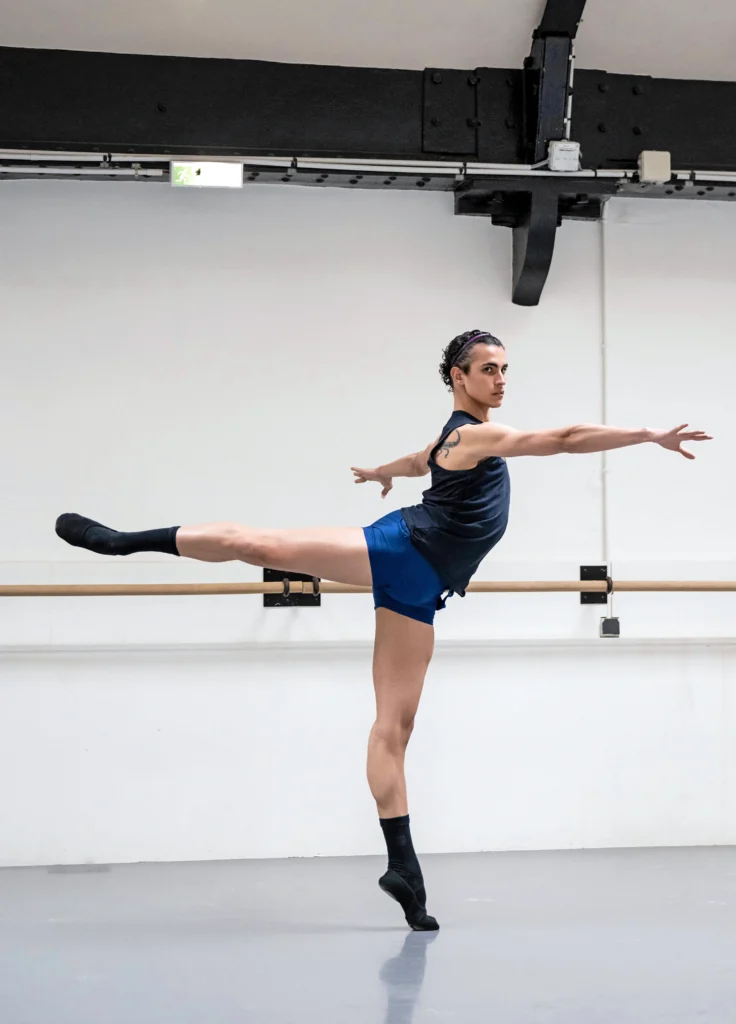
Dancers at Paris Opéra Ballet clamor to perform Maurice Béjart’s Song of a Wayfarer, a lengthy, introspective duet for two men, often given to mature stars. Yet in 2023, Spain’s Enzo Saugar, a young dancer at the lowest rung of the company, was cast as the mysterious figure who leads his companion to his destiny. Saugar, 22, brought sensuous authority to the role, instantly setting himself apart as a future soloist.
After getting his initial training on his home island of Gran Canaria with Carmen Robles and Anatol Yanowsky, Saugar entered the Paris Opéra Ballet School at the age of 13. A company member since 2020, he was promoted to coryphée last year and made his debut as Swan Lake’s Rothbart.
And in the wings, he has been pursuing a long-held dream: For the past few years, he has trained regularly on pointe. “Most teachers” have been supportive at the still-traditional POB since they realized he was serious, Saugar says. In 2024, he performed a glitter-heavy version of The Dying Swan in a cabaret, and hopes “to bring a little more non-binarity” to the Paris ballet scene.
—Laura Cappelle
Return to top
Gilbert T. Small II
Director, Gibney Company

“How can we make the work more human?” is the driving question for Gilbert T. Small II. In asking his dancers to interrogate it, the director of Gibney Company elicits rigor, athleticism, and exquisite performance quality. After more than a decade performing with Ballet BC under the direction of Emily Molnar—not to mention dancing with Sidra Bell and Kyle Abraham, and more recently with dani tirrell and zoe | juniper—Small moved to New York City to become Gibney Company’s rehearsal director as it prepared for its debut season at The Joyce Theater in 2021, and within seven months was promoted to director. A visionary, he is invested in moving dance forward. This intention guides his curatorial choices and infuses his leadership with deep care. According to Small, “We owe the art form itself our hearts, spirits, and labor.”
—Sydnie L. Mosley
Return to top
Yoel Vargas
Flamenco dancer and choreographer
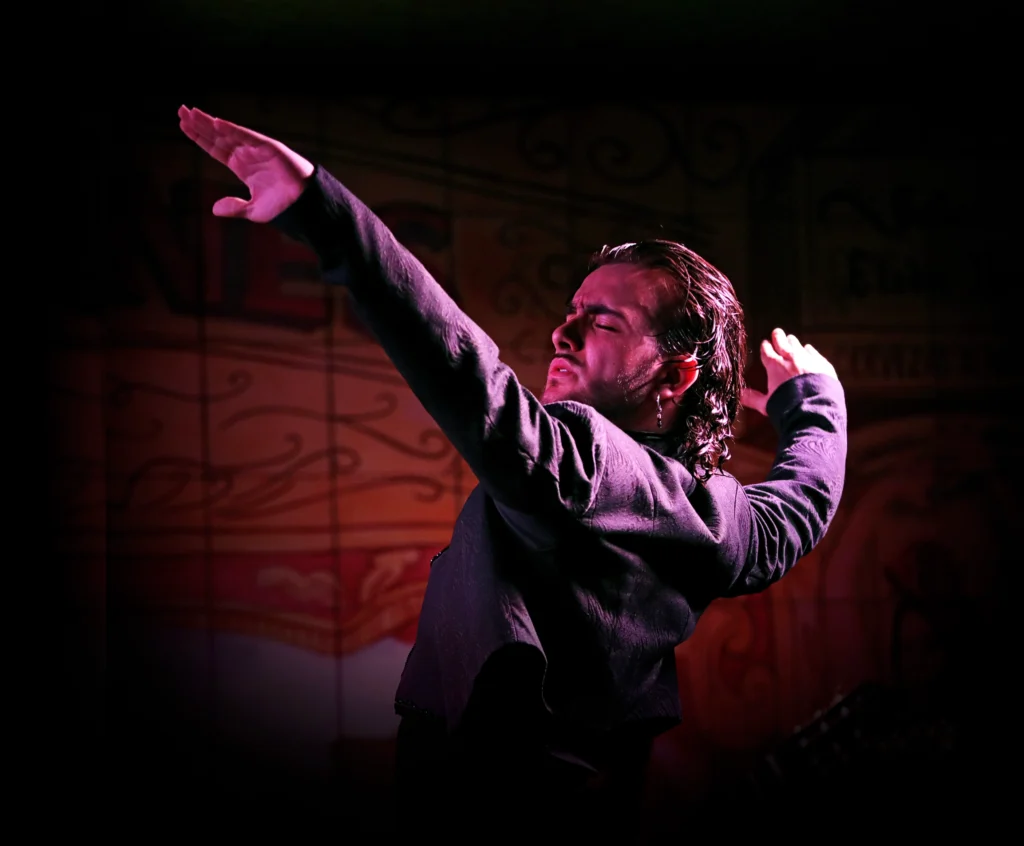
The realm of flamenco choreography is tremendously difficult to break into at a young age. Yoel Vargas is at least a decade ahead of the curve. The 21-year-old is already a prize-winning dancer and choreographer, with the perfect cocktail of technique, emotive transmission, and creative sensibility.
Vargas was 17 when he joined the company of famed choreographer Manuel Liñan for the gender-redefining work VIVA! Two years later, his own choreography began to gain recognition, garnering the Flamenco Vivo Carlota Santana New York award at the 2023 Certamen de Coreografía de Danza Española y Flamenco in Madrid. “Yoel seemed open to any and every movement he could do,” says Carlota Santana, the co-founder and artistic director of the Flamenco Vivo company. “Inventive, yet contained in the tradition.” Later that year, Vargas was awarded the top dance prize, Desplante Masculino, at the prestigious Cante de las Minas competition in La Unión, Spain.
Vargas’ latest creation, ÓBITO, was developed through a Flamenco Festival In Progress residency and was presented in Taiwan last year. In it, he blends contemporary, flamenco, and classical techniques to create what he describes as “an enveloping environment that changes according to how different cultures face death, reflecting the complexity and polarity of what life and death mean in different parts of the world.”
Vargas’ combination of exceptional dance ability and creativity is reminiscent of a young Rocío Molina, a key avant-garde trailblazer. He is poised to bring evolution, or perhaps even revolution, to flamenco dance.
—Bridgit Lujan
Return to top
Miguel Wansing Lorrio
Dancer, BalletMet
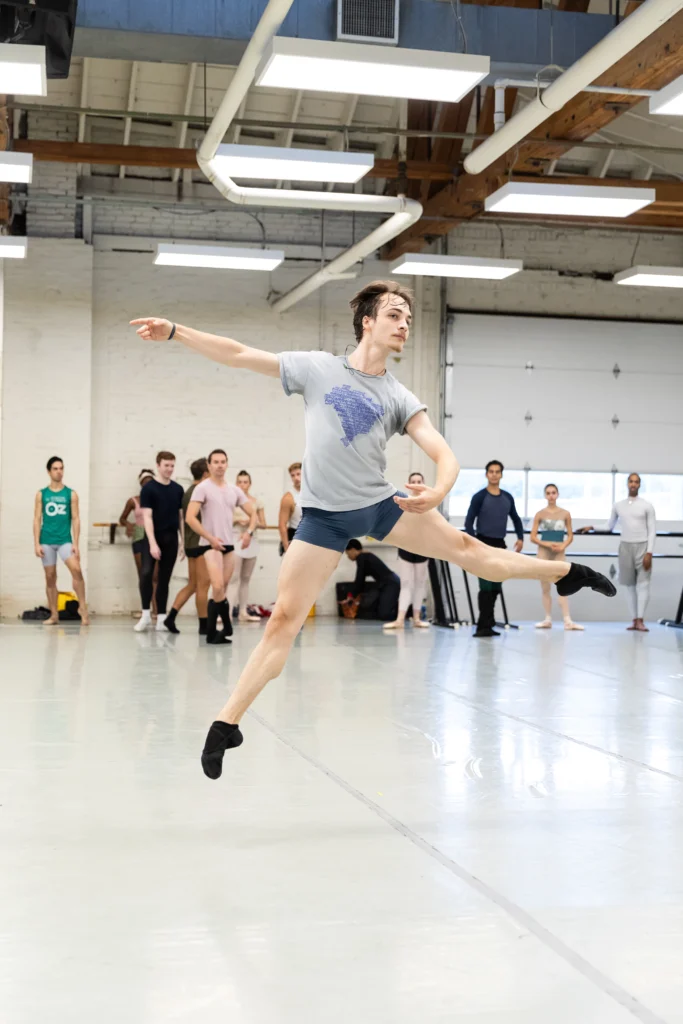
Whether maniacally scrambling up the bars of a metal cage as Renfield in David Nixon’s Dracula or palling around as Benvolio in Edwaard Liang’s Romeo and Juliet, Miguel Wansing Lorrio has a knack for characterization. But his stage presence comes alongside striking technical prowess: He delivers bravura jumps and turns with lightness and ease.
A former child actor, Wansing Lorrio began his dance education at age 11 at the Dance Academy of Cologne in his native Germany before attending John Neumeier’s School of Hamburg Ballet. It was there that, at age 14, he danced his first professional role, in Neumeier’s Romeo and Juliet.
Now in his third season with BalletMet, the 23-year-old has garnered several plum soloist roles, wowing Columbus audiences as Benno and the Jester in Liang’s Swan Lake and in the Autumn and Winter solos in Liang’s Seasons. “I am a curious person,” says Wansing Lorrio. “There is so much I want to experience. My goal is to get to a place of influence where I can use my art to do good.”
—Steve Sucato
Return to top
Header collage photo credits, left to right, top to bottom: Primera Generación Dance Collective, photo by Steve Rosa, courtesy Primera Generación Dance Collective; Joseph Markey in Swan Lake, photo by Emma Zordan, courtesy American Ballet Theatre; Kendall Ramirez in George Staib’s ARARAT, photo by Christina J. Massad, courtesy Ramirez; Enzo Saugar in Maurice Béjart’s Song of a Wayfarer, photo by Julien Benhamou, courtesy Paris Opéra Ballet; Ruby Lister in Pam Tanowitz’s Law of Mosaics, photo by Erin Baiano, courtesy New York City Ballet; Kyle Sangil in Ihsan Rustem’s Rechercher. Réunir, photo by Allina Yang, courtesy Whim W’Him; Melisa Guilliams, photo by Angela Sterling, courtesy Pacific Northwest Ballet; Leïla Ka, photo by Duy-Laurent Tran, courtesy Ka; Jasmine Hearn in their Memory Fleet: A Return to Matr, photo by Jakayla Monay, courtesy Hearn/DiverseWorks; Genna Moroni, photo by Madelyn Deutch, courtesy Moroni; Kayla Hamilton, photo by Travis Magee, courtesy Hamilton; Gilbert T. Small II, photo by Whitney Browne, courtesy Gibney Company; Qwenga in his Monolith, photo by Stefan Colson, courtesy Qwenga; Rachel Lockhart, photo by Jon Taylor, courtesy Lockhart; Symara Sarai in their Blushing Cherry, photo by Whitney Browne, courtesy Sarai; Julia Antinozzi, photo by Spencer Weidie Photography, courtesy Antinozzi; Yoel Vargas, photo by Farruk, courtesy Vargas; Brett Fukuda, photo by Agathe Poupeney, courtesy Ballet de l’Opéra national du Rhin; Francisco Lemus, photo by Gustavo Barrios, courtesy Trinity Irish Dance Company; Loughlan Prior (right) in rehearsal with Harrison James and Ana Gallardo Lobaina, photo by Ross Brown, courtesy Prior/Royal New Zealand Ballet; Isaiah Day in Alvin Ailey’s Revelations, photo by Daniel Azoulay, courtesy Alvin Ailey American Dance Theater; Miguel Wansing Lorrio in Dana Genshaft’s The Awakening, photo by Jennifer Zmuda, courtesy BalletMet; Dava Huesca, photo by Alice Chacon, courtesy Huesca; Jainil Mehta, photo by Anusha, courtesy Mehta; Mayfield Myers in George Balanchine’s The Nutcracker, photo by Alexander Iziliaev, courtesy Philadelphia Ballet
[ad_2]
Source link

